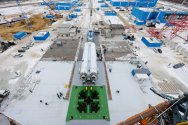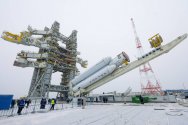It looks to me like the Russians are still playing along with the Soviet model where they have two engine suppliers. For the fighter engines that would be Saturn and Salyut. And for the large turbofans this is Aviadvigatel and Kuznetsov.
I think it is kind of messed up and excessive duplication. What makes it even worse is that to maintain the existing aviation park they ended up restarting production of components and upgrades for a paraphernalia of older engines. For example the NK-32-02 was supposed to fix some of the duplication. It was meant to be a modernized and upgraded NK-32 engine that would replace the NK-32 in the Tu-160 and the NK-25 in the Tu-22M3. It would also be used as the initial engine for the PAK-DA.
Yet what did happen? The NK-32-02 is used in the Tu-160M. The NK-25 in some modernized variant is used in the Tu-22M3M. And this is just what Kuznetsov is producing. The NK-32-02 wouldn't physically fit in the available Tu-22M3 airframes. That is why they stuck with the NK-25.
I think it is kind of messed up and excessive duplication. What makes it even worse is that to maintain the existing aviation park they ended up restarting production of components and upgrades for a paraphernalia of older engines. For example the NK-32-02 was supposed to fix some of the duplication. It was meant to be a modernized and upgraded NK-32 engine that would replace the NK-32 in the Tu-160 and the NK-25 in the Tu-22M3. It would also be used as the initial engine for the PAK-DA.
Yet what did happen? The NK-32-02 is used in the Tu-160M. The NK-25 in some modernized variant is used in the Tu-22M3M. And this is just what Kuznetsov is producing. The NK-32-02 wouldn't physically fit in the available Tu-22M3 airframes. That is why they stuck with the NK-25.
I kind of doubt it is. They would probably have to modernize it.does D-18T is even worth of this investment. i heard that, this engine is highly inefficient and poor MBTO. only 150 hours
No. It is a whole new engine just for the strategic bomber PAK-DA. Izdeliye RF is being developed by Kuznetsov while Izdeliye 30 is being developed by Saturn. If it is true that the PAK-DA will initially use the NK-32-02 and switch to the Izdeliye RF later, then the Izdeliye RF is going to be a much larger engine.Izdeliye RF is Izdeliye 30's variant for strategic bomber ?
They restarted or expanded production for the older engine models to get people working again. Unfortunately since the old production facilities were seriously dilapidated, this required massive upgrades in some cases. Then they financed those engine upgrade programs. And now you have the new engine programs.it is indeed hell of a job for Russian ministry to manage all technicians and engineers of all these projects. this is the reason why PD-14 currently using PS-90 production line.
Last edited:




